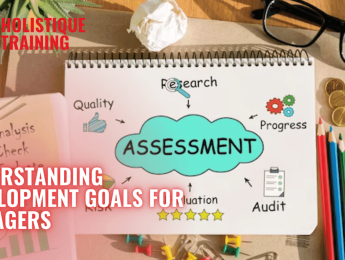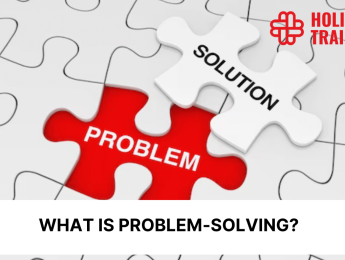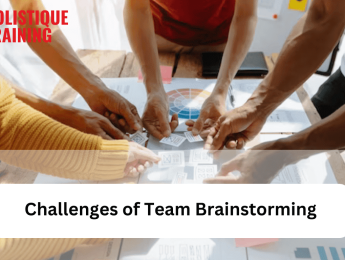- Table of Contents
- Introduction
- Understanding the Project Management Office (PMO)
- Deciphering the Center of Excellence (CoE)
- The Crucial Importance of Creating a CoE
- Elevating Project Delivery Capabilities
- Cultivating a Culture of Innovation
- Accelerating Learning Curves
- Gaining a Competitive Edge
- Transforming Your PMO into a CoE: A Step-by-Step Guide
- 1. Define Your Vision and Objectives
- 2. Assess Current Capabilities
- 3. Develop a Roadmap for Transformation
- 4. Invest in Technology and Training
- 5. Promote Cross-Functional Collaboration
- 6. Monitor and Iterate
- Four Important Prerequisites to the Transformation
- 1. Leadership Buy-In
- 2. Cultural Alignment
- 3. Resource Allocation
- 4. Clear Communication
- The Role of Change Management in the Transformation
- Building Awareness
- Engaging Stakeholders
- Providing Training and Support
- Celebrating Milestones
- Continuous Communication
Introduction
Establishing a Center of Excellence (CoE) within a Project Management Office (PMO) can be a strategic game-changer for organisations aiming to optimise project outcomes, enhance collaboration, and foster innovation. In this comprehensive exploration, we'll delve into the intricacies of PMO and CoE, uncover the significance of creating a CoE, outline the steps to transform your PMO, discuss essential prerequisites for the transformation, and underscore the pivotal role of change management in this evolutionary journey.
Understanding the Project Management Office (PMO)
At its core, a Project Management Office (PMO) serves as the nerve centre for an organisation's project management activities. It is the epicentre where projects are planned, monitored, and controlled, ensuring alignment with organisational goals. The PMO acts as a guiding force, streamlining processes, standardising methodologies, and enhancing overall project efficiency.
Deciphering the Center of Excellence (CoE)
A Center of Excellence (CoE) is a specialised entity within an organisation that excels in a particular domain, be it project management, technology, or any other strategic function. In the context of a PMO, a CoE represents a concentrated hub of expertise, knowledge, and best practices. It transcends traditional PMO functions, aiming for excellence in project delivery, innovation, and continuous improvement.
The Crucial Importance of Creating a CoE
Why should organisations invest time and resources in transforming their PMO into a CoE? The answer lies in the multifaceted benefits that a CoE brings to the table. Let’s delve deep into each one of them:
Elevating Project Delivery Capabilities
A CoE is more than a mere augmentation of the PMO; it represents a paradigm shift in how organisations approach project management. By concentrating expertise, knowledge, and best practices, a CoE becomes a powerhouse for refining project delivery capabilities. It acts as a focal point where project managers, teams, and stakeholders can tap into a reservoir of proven methodologies, lessons learned, and innovative approaches.
In essence, a CoE is a crucible for refining project management practices, ensuring that every project benefits from the collective wisdom accumulated within the organisation. This elevation in project delivery capabilities translates into increased efficiency, reduced risks, and ultimately, a higher rate of successful project outcomes.
Cultivating a Culture of Innovation
One of the hallmark features of a CoE is its inherent commitment to fostering innovation. Unlike a traditional PMO that might be focused solely on processes and methodologies, a CoE transcends these boundaries. It becomes a breeding ground for new ideas, cutting-edge technologies, and inventive solutions.
By encouraging cross-functional collaboration and providing a platform for sharing diverse perspectives, a CoE unlocks the creative potential within an organisation. It's a dynamic space where teams are empowered to experiment, iterate, and push the boundaries of conventional project management. In this environment,innovation becomes ingrained in the organisational DNA, leading to breakthroughs, efficiency gains, and a competitive edge in the marketplace.
Accelerating Learning Curves
In the fast-paced landscape of project management, the ability to adapt and learn quickly is a strategic advantage. A CoE plays a pivotal role in accelerating the learning curves of project teams. It serves as a centralised repository of knowledge, offering a wealth of resources, training programs, and mentorship opportunities.
New hires, seasoned project managers, and even leadership teams can leverage the CoE to enhance their skills, stay abreast of industry trends, and navigate the complexities of project management with finesse. This acceleration in learning not only contributes to individual growth but also creates a collective force of highly skilled professionals capable of tackling evolving challenges with agility.
Gaining a Competitive Edge
In today's fiercely competitive business landscape, organisations need to differentiate themselves to thrive. A CoE becomes a strategic asset that sets an organisation apart from its peers. It becomes a symbol of commitment to excellence, innovation, and continuous improvement.
A CoE attracts top-tier talent, as professionals are drawn to organisations that prioritise skill development, provide a platform for innovation, and actively cultivate a culture of excellence. This influx of talent, coupled with the enhanced project delivery capabilities and innovative practices, positions the organisation as a leader in its industry, capable of not just meeting but exceeding customer expectations.
In summary, the crucial importance of creating a Center of Excellence within the PMO lies in its transformative potential. It goes beyond optimising processes; it's about instilling a culture of excellence, fostering innovation, accelerating learning curves, and gaining a competitive edge in the dynamic landscape of project management. A CoE isn't just a structural change; it's a strategic investment that propels organisations toward sustained success and leadership in their respective domains.
Transforming Your PMO into a CoE: A Step-by-Step Guide
Embarking on the journey to transform your PMO into a CoE requires a thoughtful and strategic approach. Here's a step-by-step guide to navigate this transformative process:
1. Define Your Vision and Objectives
Transformation begins with clarity. Clearly articulate the vision for your CoE and align it with the overarching organisational objectives. What do you aspire to achieve through this metamorphosis? Whether it's heightened project efficiency, innovation, or enhanced collaboration, defining precise objectives provides the guiding North Star for your transformation journey. Set key performance indicators (KPIs) to measure success and ensure alignment with broader organisational goals. Here are some examples:
Vision & Objectives | Examples of KPIs |
Enhanced Project Efficiency | Project Delivery Time Reduction (%) |
Fostering a Culture of Innovation | Number of Implemented Innovative Ideas |
Heightened Collaboration Across Teams | Cross-Functional Project Participation |
Improved Stakeholder Satisfaction | Stakeholder Feedback Scores |
Alignment with Broader Organisational Goals | Goal Achievement Rate (%) |
2. Assess Current Capabilities
A profound understanding of the present is the cornerstone for a successful transformation. Conduct a meticulous assessment of your existing PMO, scrutinising its strengths, weaknesses, opportunities, and threats. What aspects of project management are thriving, and where are the pain points? This introspective analysis lays the foundation for tailoring the transformation strategy to your organisation's specific needs, ensuring a targeted and effective evolution.
3. Develop a Roadmap for Transformation
Transformation is not a sprint; it's a strategic marathon. Craft a detailed roadmap that outlines the specific steps, milestones, and timeline involved in the transformation process. This roadmap should be a living document, flexible enough to adapt to unforeseen challenges while staying true to the overarching vision. Allocate resources judiciously, balancing immediate needs with long-term objectives.
4. Invest in Technology and Training
A CoE thrives on the fusion of cutting-edge technology and a skilled workforce. Invest in state-of-the-artproject management tools and technologies that align with the dynamic needs of your organisation. Simultaneously, prioritise training programs to upskill your team. This isn't just about mastering new tools; it's about cultivating a mindset that embraces innovation, collaboration, and continuous learning.
5. Promote Cross-Functional Collaboration
Break down silos and cultivate an ecosystem where cross-functional collaboration flourishes. A CoE is inherently interdisciplinary, drawing strength from diverse perspectives. Encourage open communication channels between different departments and teams. Establish forums for knowledge-sharing, collaborative problem-solving, and the exchange of ideas. The success of a CoE hinges on the synergy created through cross-functional collaboration.
6. Monitor and Iterate
Transformation is a dynamic process, not a static destination. Implement robust monitoring mechanisms to track the progress of your CoE. Regularly review performance metrics, gather feedback from stakeholders, and be prepared to iterate your strategy based on evolving organisational needs. Continuous improvement is not a postscript; it's an integral part of the CoE ethos.
In essence, transforming your PMO into a CoE is a strategic odyssey that demands foresight, adaptability, and unwavering commitment. By defining a compelling vision, conducting a thorough assessment, developing a roadmap, investing in technology and training, promoting cross-functional collaboration, and embracing a culture of continuous improvement, organisations can navigate this transformative journey with confidence. The CoE isn't just a destination; it's a new era in project management where excellence becomes the norm, innovation is the currency, and organisational success is redefined.

Four Important Prerequisites to the Transformation
While the step-by-step guide provides a roadmap for transformation, there are four critical prerequisites that organisations must address to ensure a seamless transition from PMO to CoE:
1. Leadership Buy-In
Transformation begins at the top. Securing unwavering support and commitment from top leadership is the bedrock of successful CoE evolution. Leaders must not merely endorse the transformation but actively champion the cause. Their buy-in sets the tone for the entire organisation, signalling that the CoE is not just a functional upgrade but a strategic imperative.
Leadership buy-in involves more than a signature on a document; it requires a deep understanding of the transformative vision and a commitment to allocating resources—both human and financial. Leaders become the torchbearers, articulating the strategic importance of a CoE, fostering a culture of excellence, and creating an environment where innovation thrives. Withoutleadership buy-in, the CoE transformation risks being perceived as a peripheral initiative rather than a core strategic shift.
2. Cultural Alignment
Transformation isn't just a structural shift; it's a cultural metamorphosis. Before initiating the CoE journey, organisations must assess their existing culture and ensure alignment with the values and principles of a CoE. A culture that fosters collaboration, innovation, and continuous learning is essential for the CoE to thrive.
Cultural alignment involves breaking down silos and promoting a mindset that values knowledge-sharing, experimentation, and adaptability. It's about creating an environment where team members feel empowered to contribute ideas, challenge the status quo, and take calculated risks. Without a cultural shift, the CoE may encounter resistance, making it challenging to fully realise its potential as a hub of excellence and innovation.
3. Resource Allocation
A successful CoE transformation demands more than visionary leadership and a cultural shift; it requires tangible resources—both financial and human. Organisations must allocate the necessary resources to fuel the transformation, ensuring that teams have the tools, technologies, and training required to thrive in the CoE environment.
Resource allocation encompasses investing in cutting-edge project management tools, technologies, and training programs. It's about equipping teams with the skills needed to excel in their roles and stay abreast of industry best practices. Adequate resource allocation empowers the CoE to function as a dynamic and well-supported entity, capable of driving organisational excellence.
4. Clear Communication
Transparent andeffective communication is the glue that holds the transformation together. Before embarking on the CoE journey, organisations must establish clear communication channels that reach all stakeholders. This involves articulating the vision, objectives, and benefits of the CoE transformation in a language that resonates with different teams and individuals.
Clear communication is not a one-time event but an ongoing process. It involves addressing concerns, providing regular updates, and creating a communication plan that keeps everyone informed and engaged. Transparency builds trust, aligns the workforce with the transformative goals, and ensures that every member of the organisation understands their role in the CoE evolution.
In short, these four prerequisites—leadership buy-in, cultural alignment, resource allocation, and clear communication—are not optional but imperative for a successful CoE transformation. They pave the way, creating a solid foundation upon which the CoE can thrive as a strategic asset, driving organisational excellence, innovation, and a culture of continuous improvement. Only when these prerequisites are meticulously addressed can organisations confidently embark on the transformative journey towards a dynamic and impactful Center of Excellence.
The Role of Change Management in the Transformation
Change management is the linchpin of any successful organisational transformation. However,statistics show that a mere 27% of employees indicated that their leadership possesses the necessary training to guide teams through periods of change. The shift from a traditional PMO to a dynamic CoE involves disrupting established norms and embracing new ways of working. Here's how change management plays a pivotal role in this evolutionary journey:
Building Awareness
Change begins with awareness. Before the seeds of transformation can take root, organisations must cultivate a deep understanding of the why, what, and how behind the CoE evolution. Change management, in this context, becomes the storyteller, weaving a narrative that communicates the strategic imperative of the CoE and the benefits it brings.
This involves creating awareness not only among leadership but across all levels of the organisation. From project managers to support staff, everyone needs to comprehend the vision, objectives, and anticipated outcomes of the CoE transformation. By building awareness, change management lays the foundation for a collective understanding that becomes the rallying point for the entire organisation.
Engaging Stakeholders
Change is a collaborative endeavour. Engaging stakeholders at every step of the transformation process is a key function of change management. Stakeholders, including leadership, project teams, and even external partners, must feel like active participants in the CoE journey rather than passive observers.
This engagement involves seeking input, addressing concerns, and incorporating feedback into the transformation strategy. By involving stakeholders from the outset, change management fosters a sense of ownership and commitment, turning resistance into collaboration. It's not just about telling stakeholders about the change; it's about involving them in shaping it.
Providing Training and Support
A successful CoE transformation hinges on the preparedness of the workforce. Change management, in this context, becomes an educator, providing the necessary training and support to equip individuals and teams for the evolving landscape of the CoE.
This involves more than just technical training on new tools and processes; it extends to cultivating a mindset that aligns with the collaborative and innovative ethos of a CoE. Change management initiatives should offer continuous support, ensuring that individuals have the resources they need to thrive in the transformed environment. The goal is to not just manage change but to enable and empower individuals to embrace it.
Celebrating Milestones
Change is a journey marked by milestones, and change management serves as the celebrant of these achievements. Recognising and celebrating milestones achieved during the CoE transformation is a crucial aspect of sustaining momentum and motivation.
Whether it's the successful adoption of new methodologies, the completion of training programs, or the realisation of tangible improvements in project outcomes, celebrations serve as powerful reinforcement. Change management orchestrates these celebrations, turning them into opportunities for recognition, team-building, and reinforcing a positive and forward-looking mindset.
Continuous Communication
In the landscape of change, communication is not a one-time affair—it's a continuous dialogue. Change management plays a pivotal role in maintaining an open line of communication throughout the transformation. Regular updates, sharing success stories, addressing challenges, and being transparent about the progress of the CoE journey are integral components.
Continuous communication builds trust, dispels uncertainties, and ensures that everyone is aligned with the overarching goals of the CoE. Change management becomes the conduit through which the pulse of the organisation is felt, ensuring that the transformation narrative remains cohesive and resonant.
In essence, the role of change management in the CoE transformation is multifaceted. It's about creating awareness, engaging stakeholders, providing training and support, celebrating milestones, and maintaining continuous communication. As the strategic navigator, change management guides the organisation through the complexities of transformation, turning it from a daunting endeavour into an opportunity for growth, collaboration, and sustained success. In the dynamic landscape of CoE evolution, change management is not just a supporting player; it's the orchestrator of a transformative symphony that echoes the harmony of organisational excellence.
In conclusion, the transformation of a PMO into a Center of Excellence represents a strategic imperative for organisations aspiring to excel in project management. By following a meticulous transformation roadmap, addressing critical prerequisites, and embracing change management principles, organisations can position themselves at the forefront of innovation, collaboration, and continuous improvement. The journey may be challenging, but the rewards in terms of enhanced project outcomes and organisational excellence make it undeniably worthwhile. Unleash the potential of your PMO and pave the way for a future where excellence is not just a goal but a way of organisational life.
In your pursuit of organisational excellence through PMO transformation, equip yourself and your team with the skills needed to navigate this dynamic journey. Our course, "Project Management for Non-Managerial Positions," is tailored to empower individuals at every level, providing practical insights, hands-on training, and strategies to thrive in the evolving CoE landscape. Whether you're a project contributor or a team member, this course unlocks the keys to successful project management, ensuring you play a pivotal role in driving innovation and achieving excellence within your organisation. Seize this opportunity to be a catalyst for change – enrol today and elevate your project management prowess to new heights!
























